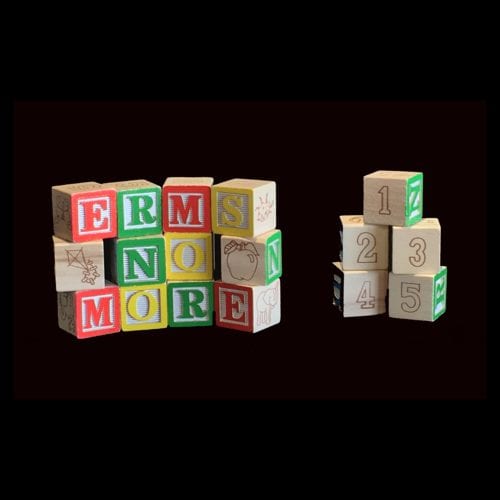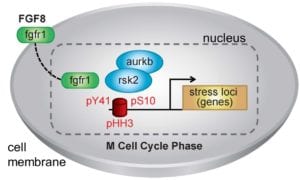Funding was first jumpstarted by an anonymous donor
A question families often ask is, how does lab research on embryonal rhabdomyosarcoma apply to me or my child? Our lab doesn’t offer medical advice, but the question is still valid. This project’s goal is to determine the major types of embryonal rhabdomyosarcoma – and determine the best treatments for each “archetype”. In a children’s block letter toy set, There are 26 letters. If we divide those into 5 major groups (A-E, F-J, K-O, P-T and U-Z), we can look for treatments with available and emerging new drugs that treat each group in a more “personalized” way.
Our approach is as follows:
We will use publicly available RNA (and DNA) sequencing data to divide embryonal rhabdomyosarcoma into 5 groups.
We will use Pax7:Foxo1 rhabdomyosarcoma as a ERMS-similar outgroup. We’ll know that these groups cover the full breadth of embryonal rhabdomyosarcoma (eRMS) because these biopsy samples represent all children across North America who were enrolled in Children’s Oncology Group (COG) clinical trials.
What’s next? We need experimental model systems to test drugs in. One kind of a model system is a cell line. The RD cell line is very popular for studying eRMS, but it was made in 1968. That’s a long time ago! We need a broader range of cell lines to match up to the COG biopsy samples. We’ve cataloged and have in our lab a great number of other eRMS cell lines (for details, see our publication).
We also develop new primary tumor cell cultures from families willing to share tissue from surgery (and sometimes from autopsies). Since these tumor cell cultures are made in recent months or years, they are perhaps especially reflective of contemporary eRMS patients.
Can we do more? Absolutely. We want to be able to go beyond cell lines in petri dishes for testing drugs: we aim to test drugs against the different types of eRMS using mice. We can implant mice with tumors from children, adolescents and young adults. Once tumors have grown, we can treat these mice with the drugs (or drug combinations) that showed the most promise in petri dish (cell line/cell culture) studies.
Many models exist that we have already generated with our partners at The Jackson Laboratory. Our collaborators at Champions Oncology have also created a number of these models. We continue to make new models as families donate tissue to this effort.
THE RESULT: Generating data as efficiently and accurately as possible, we plan to have drug – genetic matches for each type of embryonal rhabdomyosarcoma … and to publish this data, but also to share it in real time with pediatric oncologists of eRMS patients who may have scientific interest. Extend the reach of this project to more and more children’s subtypes through crowdfunding contributions here.





